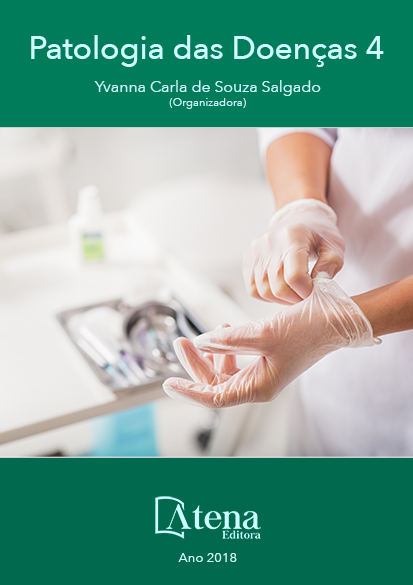
TRATAMENTO DA PARACOCCIDIOIDOMICOSE COM ITRACONAZOL EM COMPARAÇÃO COM COTRIMOXAZOL
Introdução: Conforme o consenso
brasileiro, itraconazol é a primeira escolha no
tratamento da paracoccidioidomicose (PCM),
mas são poucos os estudos comparativos com
a segunda escolha terapêutica, sulfametoxazol/
trimetoprim (cotrimoxazol - CMX). Objetivo:
Avaliar a eficácia e a efetividade do itraconazol
na PCM e comparar o tempo para cura clínica
e sorológica entre itraconazol e cotrimoxazol.
Metodologia: Pacientes com PCM atendidos
em um único centro entre 2000 e 2014
foram incluídos; e foram excluídos os que
apresentavam outra doença infecciosa crônica
ou fizeram uso de outro antifúngico. Para a
comparação foram selecionados os pacientes
tratados com itraconazol e foi pareado um
grupo controle de pacientes tratados com
cotrimoxazol. Resultados: De 23 pacientes
que iniciaram com itraconazol, 13 (56,5%)
concluíram o tratamento, pois 2 (8,7%) ainda
estavam em uso por não apresentarem
critérios de cura, 4 (17,4%) abandonaram o
seguimento e 4 (17,4%) necessitaram troca de
medicamento, 3 (13,0%) por falta do itraconazol
na rede pública e 1 devido a evento adverso.
A efetividade foi 56,5% (13/23). A eficácia foi
86,7% (13/15). A mediana de tempo para cura
clínica com itraconazol foi 51,0 dias vs 119,5
com cotrimoxazol (p=0,1750) e o tempo para
cura sorológica 449,0 dias vs 651,0 (p=0,29).
Entre os que finalizaram o tratamento, nenhum
registro de reação adversa foi observado no
grupo itraconazol contra 8 (36,4%) no grupo
cotrimoxazol. Conclusão: A eficácia foi boa,
porém a efetividade foi comprometida pelo
abandono do seguimento e pela falta do
medicamento na rede. O itraconazol mostrouse
mais seguro que o cotrimoxazol.
TRATAMENTO DA PARACOCCIDIOIDOMICOSE COM ITRACONAZOL EM COMPARAÇÃO COM COTRIMOXAZOL
-
DOI: Atena
-
Palavras-chave: paracoccidioidomicose (PCM), itraconazol, cotrimoxazol
-
Keywords: Paracoccidioidomycosis, Itroconazole, Cotrimoxazole
-
Abstract:
Introduction: According to
Brazilian consensus, itraconazole is the
first drug of choice in the treatment of
Paracoccidioidomycosis (PCM), but few
studies exist that compare it with the second
therapeutic choice, sulfamethoxazole/
trimethoprim (cotrimoxazole - CMX). Objective:
Evaluating the efficacy and effectiveness of itraconazole in the treatment of PCM
and comparing the time for clinical and serologic cure between itraconazole and
cotrimoxazole. Methodology: Patients with PCM taken to a single health center
between 2000 and 2004 were included; those presenting any other chronic infectious
disease or using any other antifungal medication were excluded. For comparison,
patients treated with itraconazole were part of the experimental group and patients
treated with cotrimoxazole were part of the control group. Results: Out of 23 patients
who initiated treatment with itraconazole, 13 (56,5%) finished the treatment; 2 (8,7%)
were still undergoing treatment given that no cure criteria were met; 4 (17,4%)
abandoned the treatment and 4 (17,4%) needed to change medicines: 3 (13,0%)
because of a shortage of itraconazole in the public health system and 1 due to adverse
event. Effectiveness measured 56,5% (13/23). Efficacy measured 86,7% (13/15). The
median of time for clinical cure using itraconazole was 51,0 days compared to 119,5
for cotrimoxazole (p=0,1750) and the time for serologic cure was 449,0 days compared
to 651,0 respectively (p=0,29). Among those who finished the treatment, no adverse
reactions were observed in the itraconazole group against 8 (36,4%) in the cotrimoxazole
group. Conclusion: Efficacy was good but effectiveness was compromised by the
abandoning of the treatment due to shortage in the public health system. itraconazole
was demonstrated to be safer than cotrimoxazole.
-
Número de páginas: 15
- Suzane Eberhart Ribeiro da Silva


